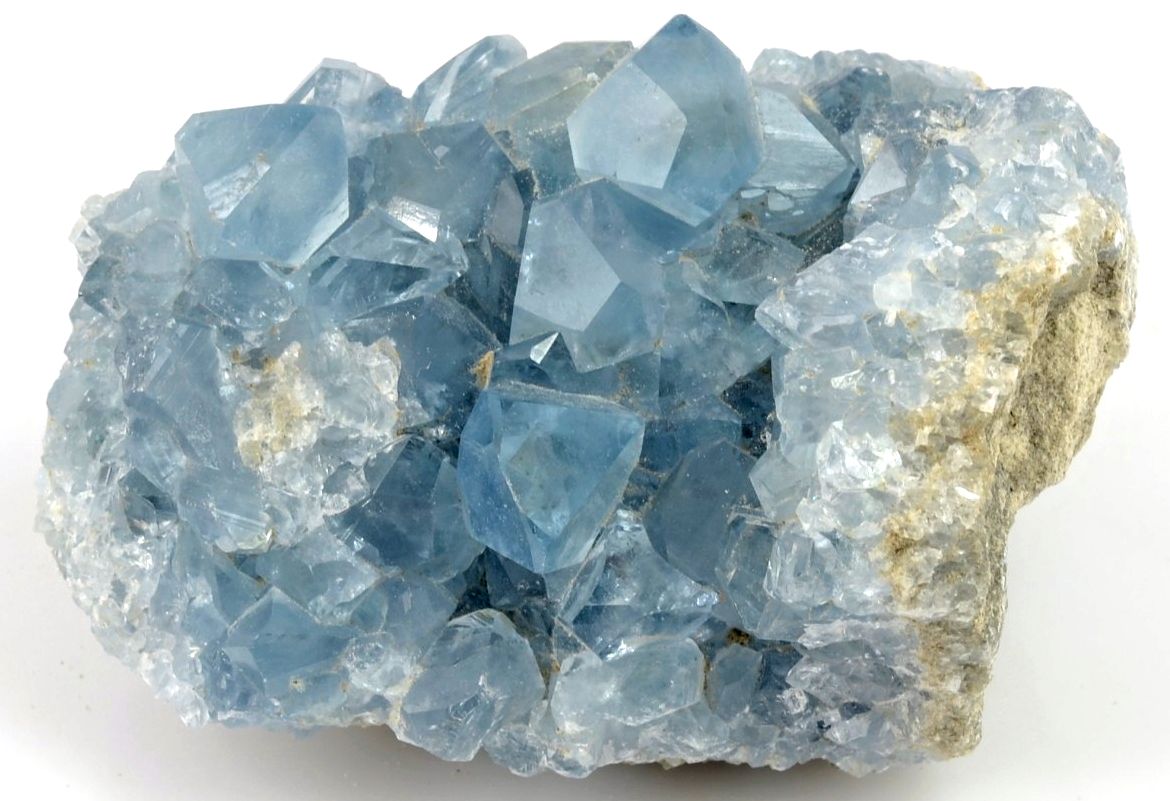Celestin je chemicky síran strontnatý (SrSO4). Název pochází z latinského "coeli" = nebesa, pro jeho světle až středně modrou barvu. Má sloupcovité, tabulkovité, prizmatické a dobře omezené krystaly.

Krystaly jsou dobře štěpné ve dvou směrech, průsvitné až průhledné. Nejčastěji však celestin tvoří zrnité, zemité, celistvé agregáty a konkrece.
Největší celestinová geoda
Největší celestinovou geodu na světě našli v roce 1897 při hloubení studny ve vinařství Heineman (Heineman Winery). Vinařství se nachází ve státě Ohio (USA) a jeskyně (geoda) je dodnes přístupná. Stěny jeskyně jsou pokryty krystaly celestinu 20 - 45 cm dlouhými a až jeden metr širokými! Původní jeskyně byla však mnohem menší, protože krystaly byly těženy a prodávány k výrobě ohňostrojů (stroncium obarvuje plamen karmínově červeně). Majitele vinařství ale v době prohibice napadlo, že by mohl za poplatek geodu zpřístupnit veřejnosti. Toto řešení nakonec pomohlo vinařství přežít a dodnes nám zachovat jejich víno i tento mineralogický unikát.
Vznik celestinu
Celestin vzniká především v mořských lagunárních jílovitých a slínitých usazeninách, z nichž je těžen jako zdroj stroncia. Může se vysrážet přímo z mořské vody a často se jako vedlejší složka objevuje v evaporitických ložiscích. Méně běžný je vznik hydrotermální. Doprovodnými minerály jsou anhydrit, halit, kalcit, aragonit, sádrovec, síra, galenit, sfalerit.